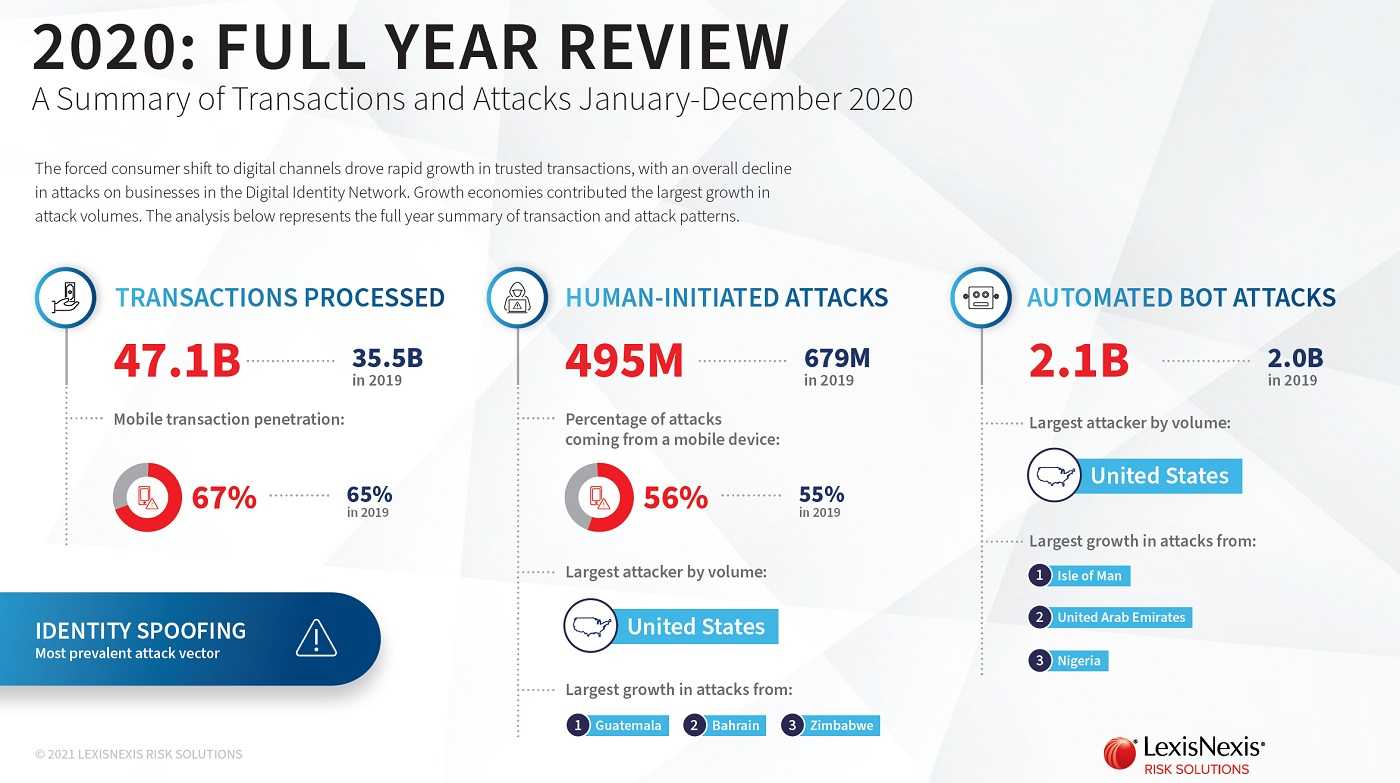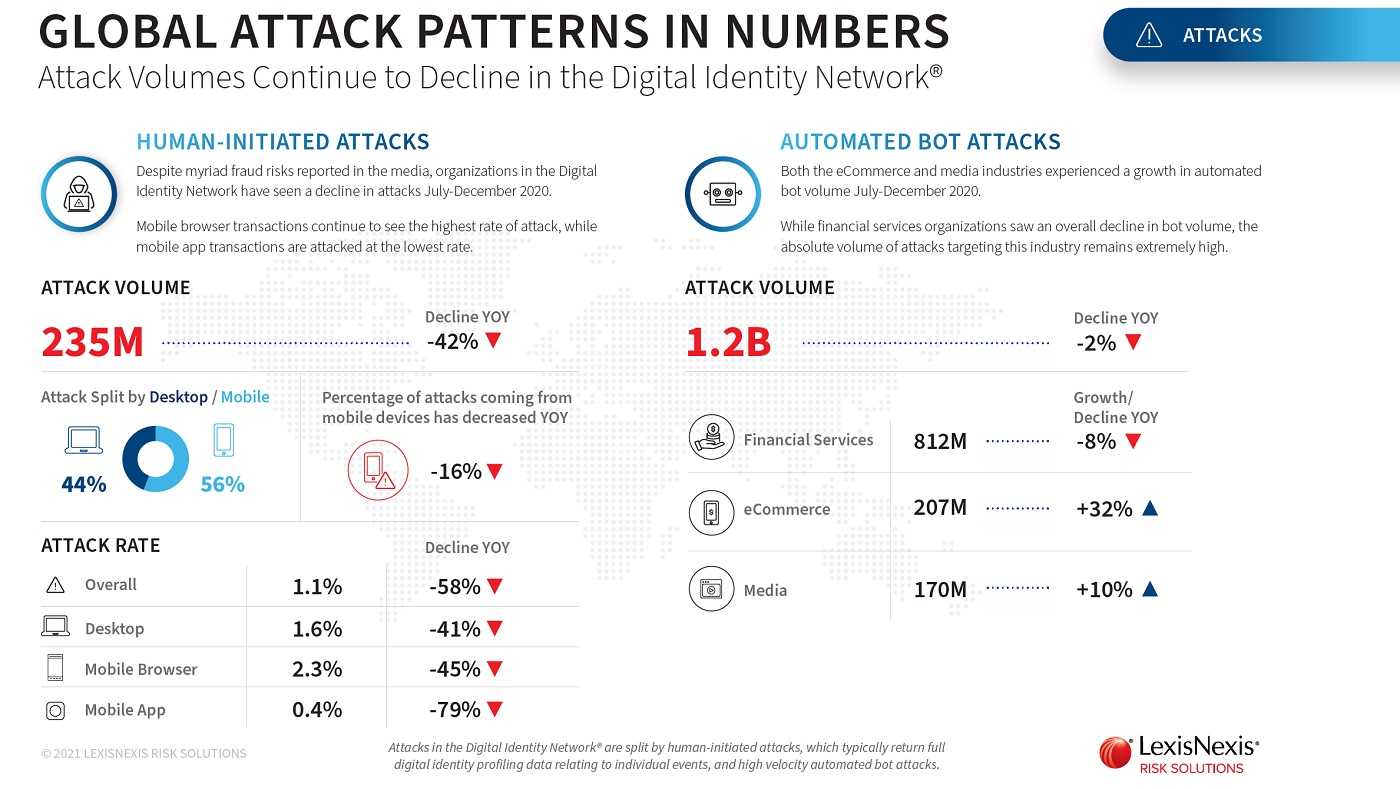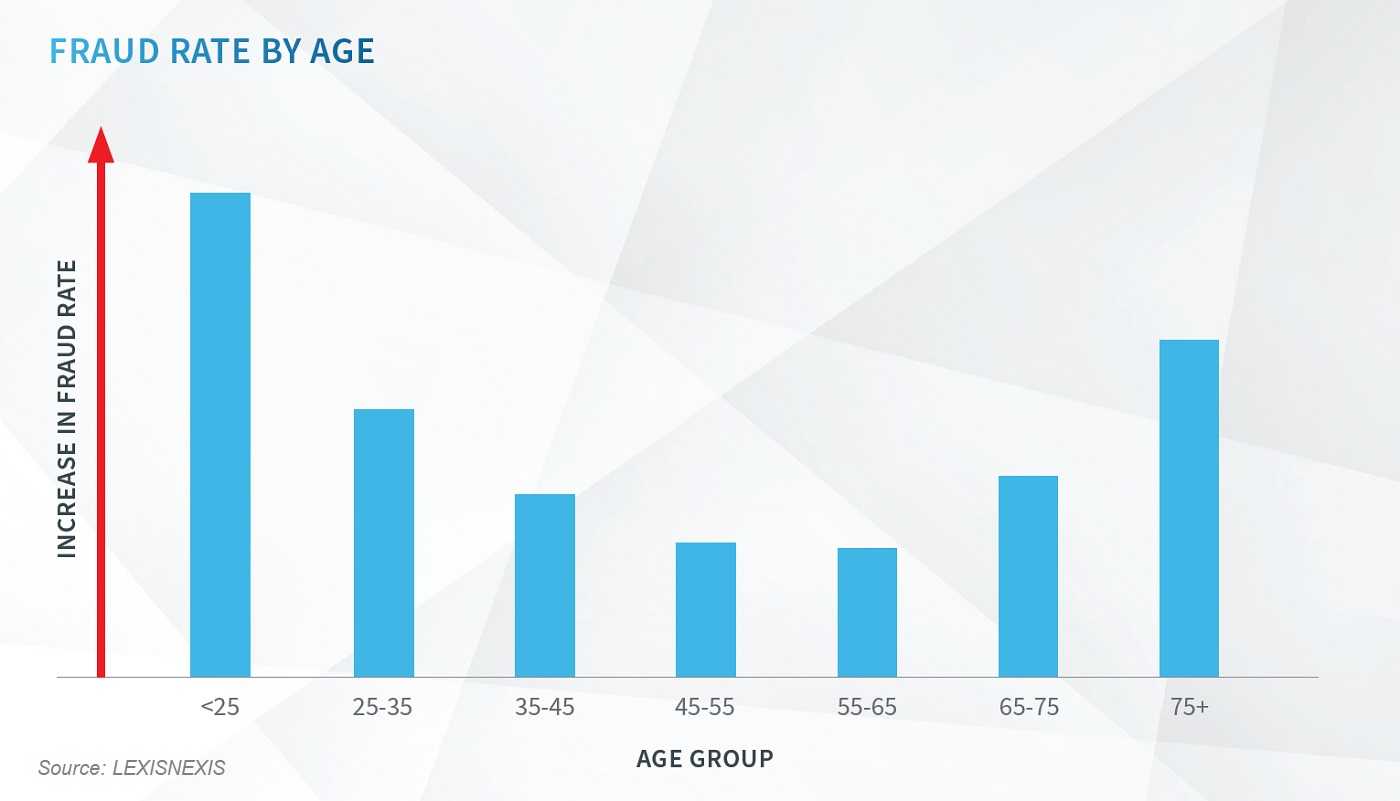Research revealed by LexisNexis Risk Solutions in its bi-annual Cybercrime Report sheds light on those most victimized by cyber-fraud. It’s a sad but necessary reminder of those most vulnerable to online abuse, seniors over the age of 75 and young adults under the age of 25. Relatively polar opposite victims, the report reveals that due to massive global changes last year, an avalanche of new opportunities for fraudulent activity involving the two demographic groups increased.
The global spike in opportunity was in large part a result of new online users, many younger and many older. LexisNexis found a 29% growth in the volume of global transactions over a six-month period. The largest growth in transactions were in the financial services, e-commerce, and media sectors.

Many of the latest online consumers were also new to the digital world, increasing the potential they would also become the newest victims of cyber-fraud. The report finds a 10% growth in new consumers were in the under 25 age group. The new consumers in the 75 and older group are considered less tech-savvy and likely more vulnerable to digital fraud abuse. The report also found the attack rate for e-commerce payments made on mobile apps are higher than any other industry, with 67% of all transactions. The devices both older and younger consumers likely have the most convenient access to are mobile.
With the two groups being most vulnerable to fraud attacks, the number of bot attacks grew by 100 million last year. The fraudsters behind the bots were testing stolen identity credentials, according to the VP of Fraud and Identity at LexisNexis “Fraudsters are opportunists, looking for the easiest targets…”

That’s where the victim age groups come into play.
As for the under 25 group, the VP continues "We most often think of these young adults as highly tech savvy, but many also tend to be more relaxed in their usage patterns and willingness to share personal data…" And for the 75+ set, “The over 75 age group faces a different challenge as they are generally considered to be less familiar with the latest digital technologies. This lack of familiarity increases their susceptibility to scams and phishing attempts…”

Cybersecurity Tips for All Ages
The importance of education, layered fraud defenses, and online messaging can protect a large swath of online users, no matter their age. Part of the education should always include how to spot phishing emails. A hacker favorite for installing malware on devices, finding a phishing email before acting on it is an invaluable tool.
Spotting Phishing
These emails usually have subject lines designed to get an urgent and immediate reaction from the recipient. They can also provide links that go to fake web pages designed to steal data. Many also have attachments they urge users to open. Those attachments are likely to be malware-filled, and once opened can unleash a torrent of cybercrime. Using security options like MFA (multi-factor-authentication) and 2FA (two-factor authentication) that many apps offer is an easy way for an e-commerce site to validate a user’s identity. If the email is from an unknown sender or links or attachments are not expected, confirm it’s OK with the sender or just delete it. Remember, a cyber-smart user is always a smaller target for fraud and other cybercrimes.